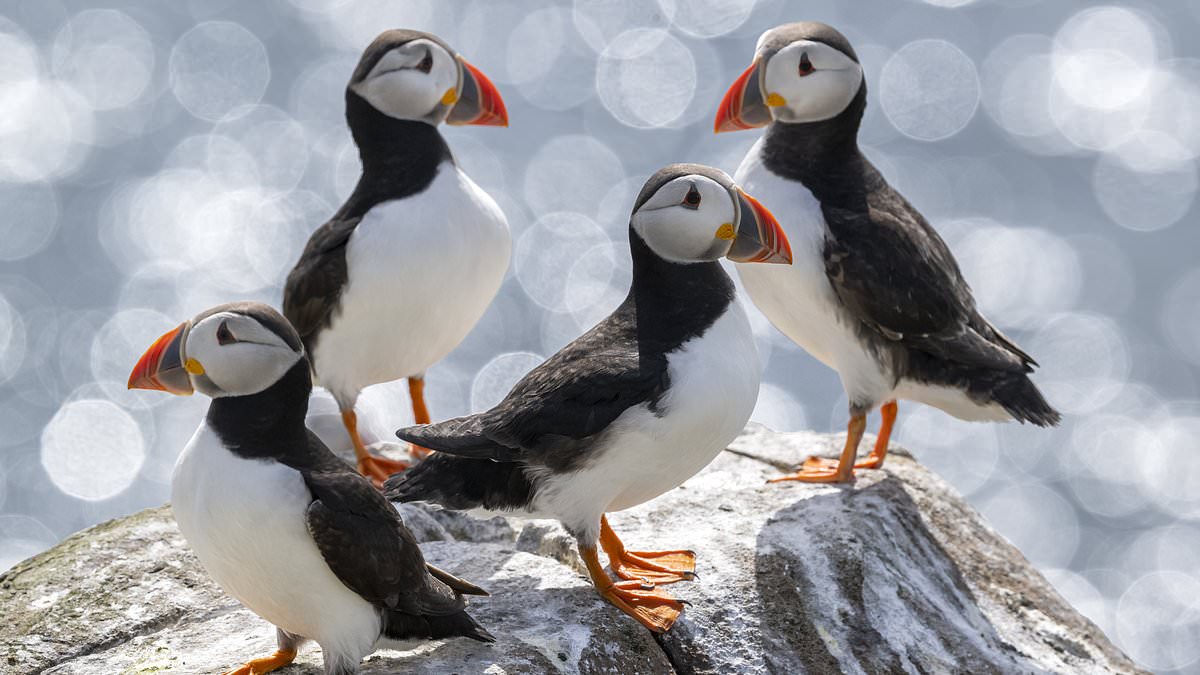Puffin numbers are on the up in the British Isles after being devastated by bird flu.
The first survey of the colourful birds in five years has found that puffin numbers are up 15 per cent to an estimated 50,000 pairs last year on the Farne Islands, compared to 44,000 in 2019.
The rebound in numbers of the creatures, affectionately known as the ‘clowns of the sea’, comes after bird flu ravaged the puffin populations inbetween these dates.
Rangers on the Farne Islands, owned by the National Trust, said that bird flu, also known as Avian Influenza was absent during the survey – possibly suggesting that the seabirds have a natural resistance to the disease.
This survey only took place in the islands of the coast of Northumberland but is probably indicative of what is happening in other parts of Britain where puffins are found.
National Trust Area Ranger on the Farne Islands, Sophia Jackson said: ‘We just didn’t know what to expect with this year’s count.
‘Annual monitoring is so important in our care of all the birds that live and breed on the islands as it allows us to understand the impacts of climate change, particular weather patterns as well as disease.
‘We feared the worse after we sadly collected 938 dead puffins in 2022 and 2023 which had died due to bird flu – but it’s been amazing to get this positive news; and it seems due to the species’ own ‘self-isolating’ behaviours that they have weathered this particular storm.’
Puffins are the only seabirds that lay their eggs in burrows on the vegetated areas of the islands, and typically return to the same burrow each year to breed.
Sophia continued: ‘We think another reason for puffins doing well this year is down to the weather. Although over the winter we saw heavy rain and storms – during the breeding season, despite regular periods of rain we luckily avoided any storms which will have helped the puffins ability to fish for sandeels their preferred food source.
‘Diseases, climate change and overfishing are the three main threats to puffins and all the other seabirds we care for, and we are keen to do all we can to ensure the islands have the optimum conditions to ensure these birds keep returning year-on-year and feel safe and protected during a critical time for them.’
A particular interesting finding from this year’s observations was the variance in puffin numbers across the islands between this year and the last count, with fewer pairs recorded on the outer islands and more appearing to nest on Inner Farne the largest of the archipelago where 26,552 pairs were recorded.
Dr Chris Redfern, Emeritus Professor in the School of Natural and Environmental Sciences at Newcastle University, who helped to verify this year’s results said: ‘It is very good news that puffin numbers for the Farnes overall are holding up.
‘The possible displacement or decline of puffins breeding on the Outer Group of islands is worrying though; it will be important to try and work out why, and whether or not anything can be done to ensure the long-term stability of puffin and other seabird colonies throughout the archipelago.’
